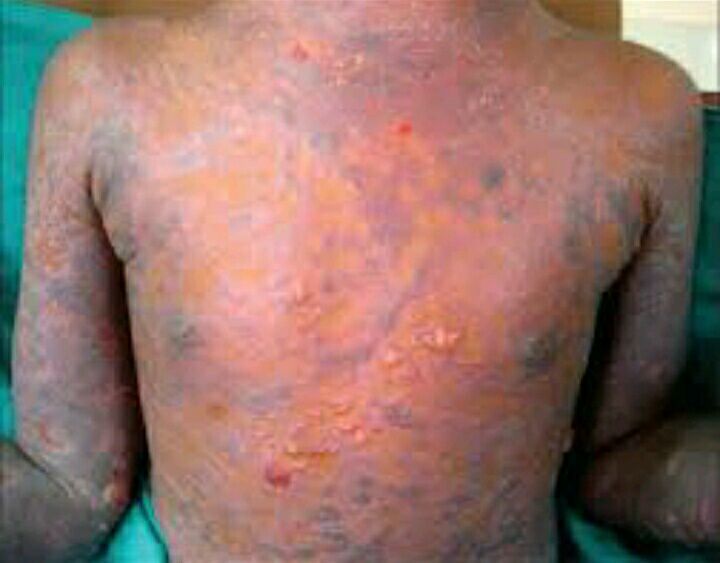Lichen Planus: Everything You Need To Know
Lichen planus is a skin rash triggered by the immune system. It’s not known why the immune response occurs. There may be several contributing factors, and each case is different. Potential causes include:
- Viral infections
- Allergens
- Stress
- Genetics
Sometimes lichen planus occurs along with autoimmune disorders. While it may be uncomfortable, in most cases lichen planus is not a serious condition. It’s also not contagious.
However, there are some rare variations of the condition that may be serious and painful. These conditions can be treated with topical and oral medications to reduce symptoms, or by using drugs that suppress the immune system.
Symptoms of lichen planus
- Purplish-colored lesions or bumps with flat tops on your skin or genitals
- Lesions that develop and spread over the body over the course of several weeks or a few months
- Itching at the site of the rash
- Lacy-white lesions in the mouth, which may be painful or cause a burning sensation
- Blisters, which burst and become scabby
- Thin white lines over the rash
The most common type of lichen planus affects the skin. Over the course of several weeks, lesions appear and spread. The condition usually clears up within 6 to 16 months.
Less commonly, the lesions can occur in areas besides the skin or genitals. These may include:
- Mucous membranes
- Nails
- The scalp
There are also variations of the condition more common in the middle east, asia, africa, and latin america.
What are the causes and risk factors?
Lichen planus develops when your body attacks your skin or mucous membrane cells by mistake. Doctors are not sure why this happens.
Lichen planus can occur in anyone at any age, but there are certain factors that make some people more likely to develop the condition. The skin form of lichen planus occurs in men and women equally, but women are twice as likely to get the oral form. It’s very rare in children and older adults. It’s most common in middle-aged people.
Other risk factors include having family members who’ve had lichen planus, having a viral disease like hepatitis c, or being exposed to certain chemicals that act as allergens. These allergens may include:
- Antibiotics
- Arsenic
- Gold
- Iodide compounds
- Diuretics
- Certain kinds of dyes
- Other medications
- Diagnosis of lichen planus
Anytime you see or feel a rash on your skin or lesions in your mouth or on your genitals, you should see your doctor as soon as possible. Your primary care doctor may send you to a dermatologist if a diagnosis of lichen planus is not obvious, or if your symptoms are making you very uncomfortable.
Your primary care doctor or dermatologist may be able to tell that you have lichen planus simply by looking at your rash. To confirm the diagnosis, you may need further tests.
Tests could include a biopsy, which means taking a small sample of your skin cells to view under a microscope, or an allergy test to find out if you’re having an allergic reaction. If your doctor suspects the underlying cause is an infection, you may need to have a test for hepatitis c.
Treating lichen planus
For mild cases of lichen planus, which usually clear up in weeks or months, you may not need any treatment. If the symptoms are uncomfortable or severe, your doctor can prescribe medication.
There is no cure for lichen planus, but medications that treat the symptoms are helpful and some may even be able to target a possible underlying cause. Medications often prescribed include:
- Retinoids, which are related to vitamin a and are taken topically or orally
- Corticosteroids reduce inflammation and can be topical, oral, or given as an injection
- Antihistamines reduce inflammation and may be particularly helpful if your rash is triggered by an allergen
- Nonsteroidal creams are applied topically and can suppress your immune system and help clear up the rash
- Light therapy treats lichen planus with ultraviolet light
Home treatments
There are other things you can try at home to complement your prescription treatments. These include:
- Soaking in an oatmeal bath
- Avoiding scratching
- Applying cool compresses to the rash
- Using otc anti-itch creams
Talk to your doctor before adding otc products to your treatment plan. This way you’ll be certain that nothing you might take will interact with prescription medications you’re taking.






+1.svg)
